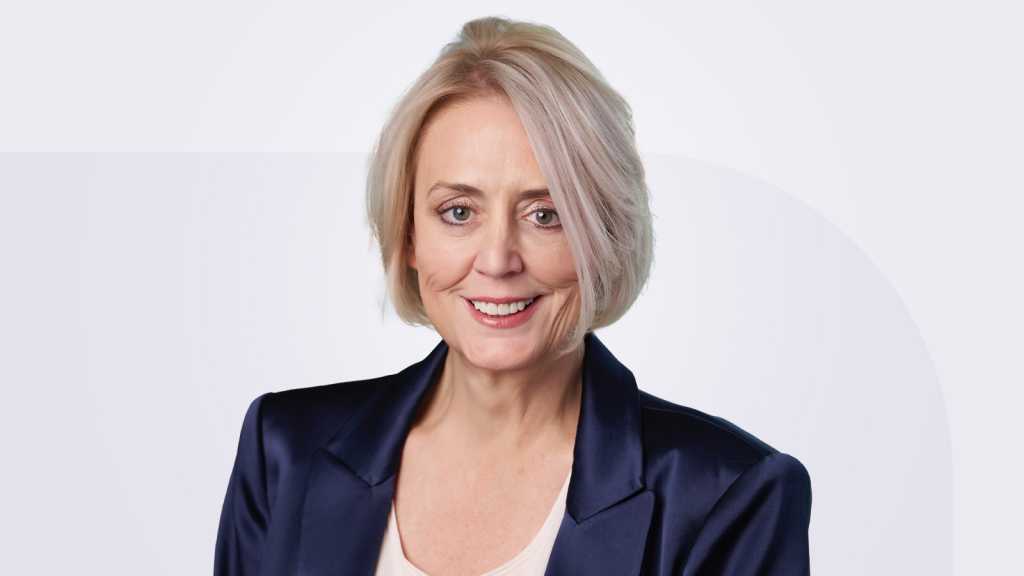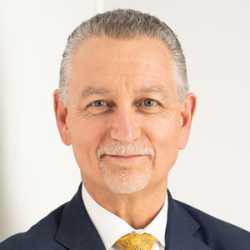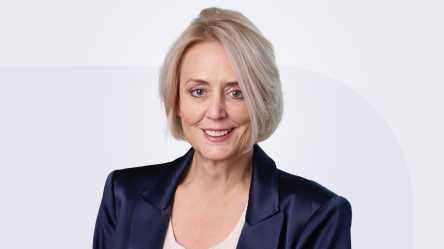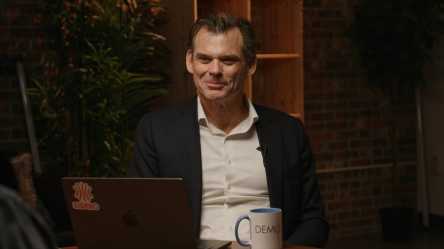The multinational power management company’s tech exec has transformed her process optimization roots into a recipe for ensuring ‘better, smarter, faster’ IT.

As executive vice president and CIO of Eaton, Katrina Redmond is playing a pivotal role in the nearly $25 billion global intelligent power management company’s efforts to power the next generation of digital and physical infrastructure. With a mandate that extends from leading digital transformation and enterprise AI at scale to energizing a global workforce, Redmond is known for her keen focus on strategic clarity and operational excellence — as well as for her grit, grace, and genuine warmth.
Redmond joined me for a recent episode of the Tech Whisperers podcast as part of our “Critical Infrastructure for Critical Infrastructure (CI4CI)” miniseries spotlighting the visionary leaders and companies powering the digital and physical foundations of our future. During our conversation, she discussed how she is building the mindset, culture, and future-ready talent to drive global transformation.
Afterwards, we spent more time discussing her path to the CIO role, which has given her a unique perspective on leading a technology organization. We also explored how she’s changing the culture of IT at Eaton to drive innovation and business outcomes, grounded in a mantra of “better, smarter, faster.” In that discussion, edited below for length and clarity, she provides a powerful wake-up call to companies that haven’t shifted their thinking about the technology organization’s value as a strategic business partner.
Dan Roberts: Given the diversity and complexity of the ever-changing role of CIO, there is no one single way of getting there. Can you talk about your path and how it’s shaped your leadership philosophies and style?
Katrina Redmond: I have undergraduate degrees in biochemistry and psychology, and a master’s degree in industrial engineering with a focus on quality assurance and control. I was actually planning on going to med school, but I had a bad auto accident that set me back from that journey. I ended up staying in the process space at GE, and the direction I went there has really informed my entire career.
I started off in process work and getting Six Sigma certified, becoming a Green Belt, then a Black Belt and Master Black Belt. From there, they launched me into sourcing and inventory leadership, operations management, facilities management, and various other operational roles. At one point, I was at a GE business that was struggling on the IT front, and they asked me if I would take on both quality and IT. I said, ‘Absolutely, but I’m not technical.’ And they said, ‘We need your process skills more than your technical skills.’ So I transitioned into a CIO role, and I’ve stayed in the role basically ever since.
Those early jobs in operations and supply chain and the process components have informed everything. No matter what you’re doing, there’s a process component to it, and if you understand the process, you can always make it better, smarter, faster. That’s where the focus has always been — consistent, reliable, reproducible type of work. That was always important to me, and it makes me better on the IT side, because I come at it from a business perspective instead of starting with a technical solution perspective.
You had the opportunity to live and work in other parts of the world while you were with GE. What did you take away from those experiences, and how does global experience make someone a better executive?
I was fortunate to live abroad when I worked for GE, in addition to living in 10 different states across the US. I lived in Shanghai for several years with GE Plastics and in Paris for several years with GE Grid Solutions. And I did a short assignment in Baroda, India, that was a very informative experience.
Living in different parts of the world has been incredibly valuable. It challenges you to expand your perceptions about yourself and how you interact with the world. This experience builds your confidence and resilience, enabling you to adapt and assimilate. It allows you to appreciate differences and recognize them as strengths.
Observing how different cultures solve problems in unique ways is fascinating and enriching. Building these relationships has transformed my leadership style, giving me a deeper appreciation for taking the time to connect with those around you with a shared objective.
You mentioned that you lead with a focus on operational excellence and helping people get ‘better, smarter, faster.’ What does that mean in practice?
Every engagement is an improvement opportunity, and you really can’t do it the same way you did it the last time. There’s always a better way. So you’re always trying to challenge yourself to find that opportunity and find where it’s not working and address it.
Many times we know something’s broken, and we don’t take the time to fix it, but we also get annoyed whenever something is broken and it takes extra time. Instead we’ve got to stop and fix what’s broken. That’s really what better, smarter, faster is: Stop being comfortable with things the way they are. Try to envision them the way they could be and then figure out the steps you need to take to get them there. When you do that, your will always end up better, in a smarter position, and everything you do will be faster.
There’s that saying: Slow down to speed up. Sometimes that’s true. But sometimes, doing something 10 times the wrong way and taking the time to fix that, and then doing it every time the right way, is literally less time. It just depends on what your perspective is, and whether you’re willing to keep walking by something that you know is broken and think, it’s somebody else’s problem. Try to figure out how you can come together and make it better together.
Any examples you can share about how are you facilitating this at Eaton?
One thing we’re doing is taking our tech teams on the shop floor to get an understanding of how applications connect, how material moves, how information flows, and how those things can be improved from an automation perspective. With AI and natural language, what you can do with robotics now versus even six months ago has vastly changed. So we’re looking at how we can apply that within our framework. What we’re finding is, things that we expect to work a certain way are not working that way, and there are struggles on the ground that we can solve if we take the time to look and understand.
In the midst of all the technical advancements and work we’re doing, it’s getting us closer to the shop floor and understanding what’s going on from a day-to-day perspective. As we’re mapping out these future capabilities, we’re also finding the dials we can turn that will help us in the short term in some of these places.
The way these technical advancements with AI can be turned and used, it’s not an ERP implementation anymore. It’s not a 5-year project or an 18-month solution cycle time. You can spin these things up in minutes and hours, and you can apply them in other places. That’s part and parcel of the areas we’re focused on and the things we’re facilitating more directly from our functional area.
What can you tell us about Eaton’s transformation agenda? Considering how ambitious it is, how do you prioritize your time?
We have a bold transformation agenda at Eaton, and along with the innovative work we are doing, it’s positioning us as a leader in the CI4CI space. Our IT transformation has been dramatic. We shifted from a reactionary to a proactive organization that supports the business in driving our overall strategy and executing major areas of focus with higher expectations and outcomes. This transformation involved a complete overhaul of how we work and the focus of our work. It has been an exciting journey that has significantly improved our efficiency and effectiveness.
In terms of where I’m being intentional about my time, we transformed our whole organization to be product-centric, so one of the areas I’m focused on is continuing to shift the culture of IT to be business-outcome focused. It’s about getting our culture right and having our team support the right business objectives that provide the most benefit.
With technical advancements happening so quickly now, we’re also focused on the big bets where we can apply and scale AI and advance the value proposition that it can provide to really change the game for Eaton going forward.
Why is shifting the culture and changing expectations around how IT shows up so important today?
If companies are still thinking of technology like it was thought of 10 years ago, 15 years ago, even five minutes ago, they’re missing an opportunity to take advantage of a skill strength within their ecosystem — the subject matter expertise that the team can bring to literally any engagement across the company ecosystem. I don’t know that any other function touches every transaction the way a tech community touches it. So we’re focused on shifting how the business thinks about us and not putting us in a box, not calling us with the solution but including us in the discussion about the problem so that we can arrive at the right solution together, utilizing the varied skill sets that are in the room to yield the best outcome or result.
This has been a major focus since I got here. Our function used to report to finance, and it started reporting to the CEO when I came on board. It was a recognition by Eaton that technology isn’t just a cost play anymore; it’s a value play. Craig Arnold [former chairman and CEO of Eaton] made that shift, and changing the culture of Eaton to appreciate that shift has been a major objective. Luckily, our current CEO Paulo Ruiz appreciates and values what we bring to the table, and we are all in on making what matters work.
The evolving culture and shifting market needs make this an exciting time to be in tech at Eaton. I feel like we’re there in a lot of ways, where we’re being included, we’re driving innovation, and we’re driving outcomes, not just waiting for something else to happen to pull us in. We’re trying to be on our front foot about addressing problems and opportunities and engaging from a business lens, not just a tech lens.
The work we are doing now to support the explosive growth in AI and other megatrends makes for exciting days. We are fortunate to work in a culture that supports driving change and achieving outcomes.
For more from Katrina Redmond on how she’s facilitating global transformation at scale at Eaton, tune in to the Tech Whisperers podcast.
See also:










